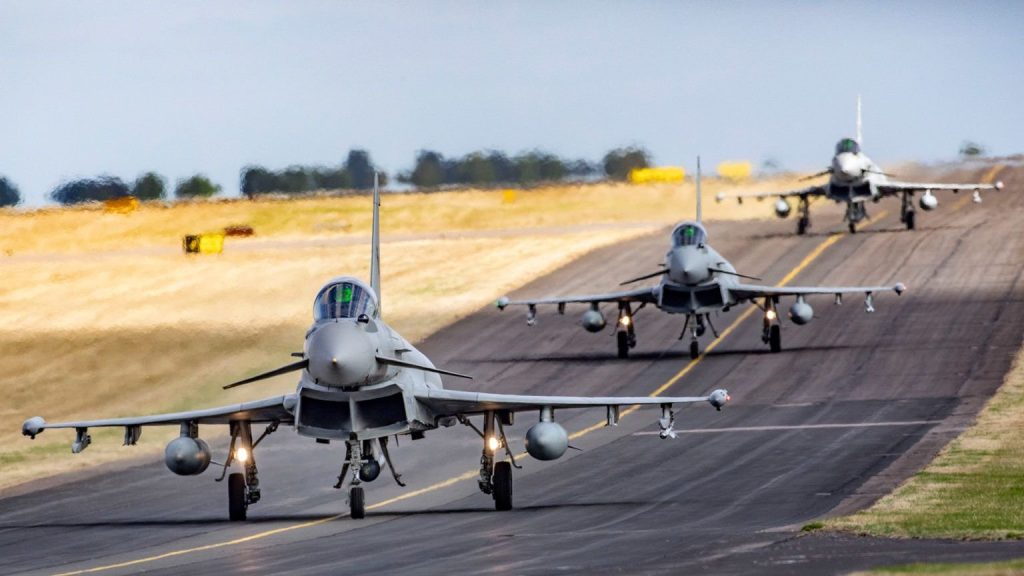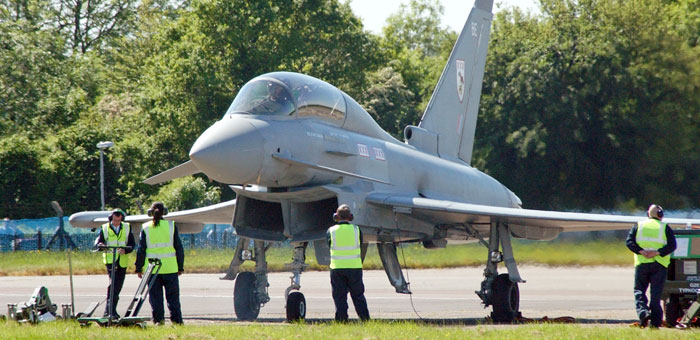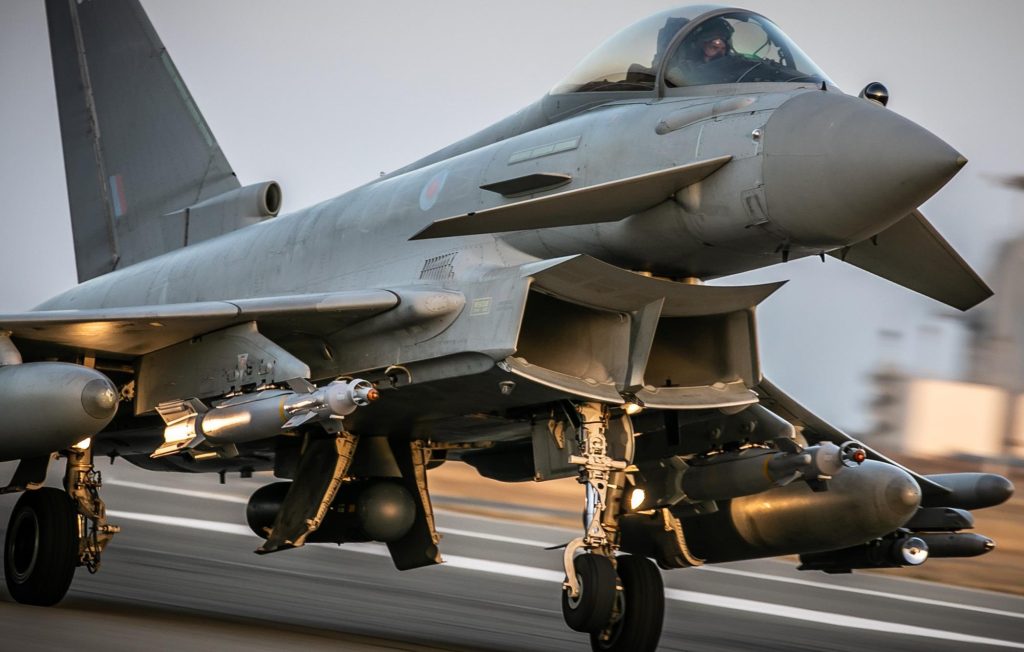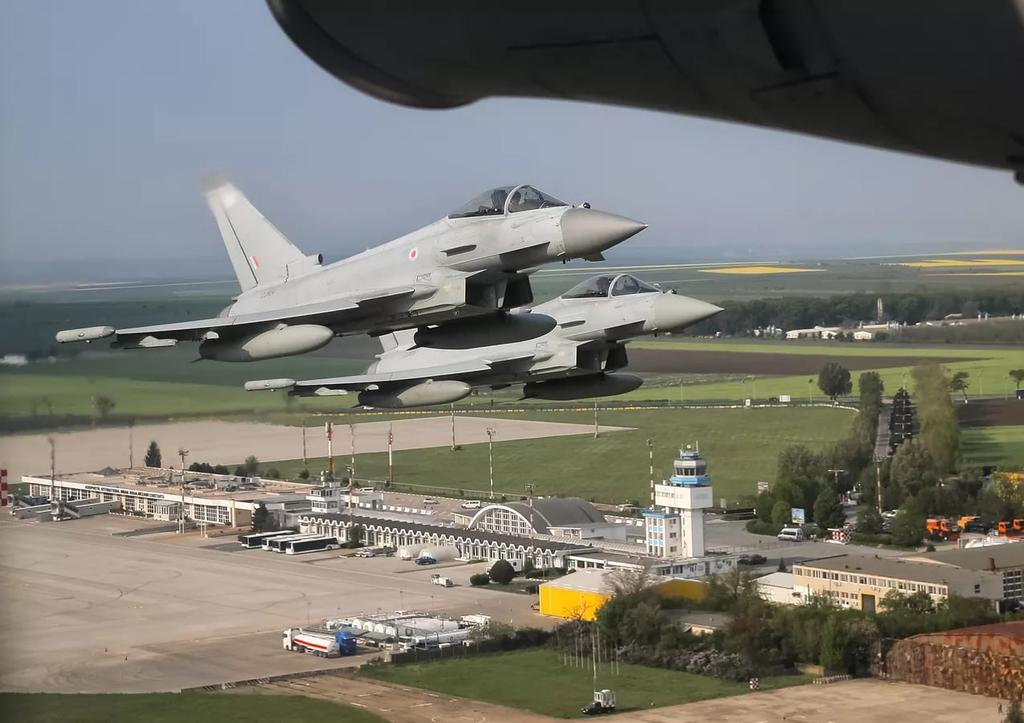The United Kingdom recently announced that it is ready to train Ukrainian fighter pilots on Royal Air Force fighters.
After President Zelensky’s “emotional” speech to the British Parliament on February 8, there was much speculation that Britain could supply Kiev with Eurofighter Typhoon fighters. The United Kingdom recently announced that it is ready to train Ukrainian fighter pilots on Royal Air Force fighters. Following this announcement, British Prime Minister Rishi Sunak called on Defense Secretary Ben Wallace to consider what kind of fighter could be supplied to Kiev.

Military experts surmise that Ukrainian pilots will be trained on the Eurofighter Typhoon, since the RAF currently operates only two types of fighters, the Eurofighter Typhoon and the F-35. Eurofighters are a good choice for training Ukrainian pilots, already familiar with Soviet-era fighters. However, the delivery of the fighters is unlikely to happen immediately as Prime Minister Sunak stated that it is a “long-term solution rather than a short-term possibility”. However, even starting discussions about supplying Eurofighters could potentially be a “turning point” in the war with Russia.
After reaching agreements to receive aid of heavy lethal weapons such as main battle tanks from NATO countries in January 2023, Ukraine has taken it a step further by increasing its requirements for Western fighters to gain air superiority. Ukraine has increased its lobbying with the UK and all attention is now on the RAF’s Eurofighter Typhoons.

The Eurofighter was built by a consortium of European companies in the UK, Germany, Italy and Spain, and all of these countries jointly built aircraft for their air force. It is possible that some kind of general agreement will be required for the transfer of these aircraft to Ukraine. These fighters were produced as pure air defense fighters. Armament consisted of MBDA Advanced Short Range Air-to-Air Missile and Raytheon AIM-120 Advanced Medium-Range Air-to-Air Missiles, as well as a cannon. The Royal Air Force operates around 100 Typhoons.
The RAF has three main standards of Typhoons. The oldest and least capable are known as Tranche 1, of which the RAF received 53 examples, and which entered service beginning in 2003. The RAF later received 67 improved Tranche 2 and 40 Tranche 3 Eurofighters, for a total of 160 of these jets. These more advanced variants feature enhanced avionics and a redesigned forward bulkhead that enables the future retrofit of an active electronically scanned array (AESA) radar.

The most painful question is whether Ukraine will be able to maintain the expensive Typhoon. This is not only expensive, but also a very difficult aircraft to operate in technical terms. It is very doubtful that the Typhoon is suitable for operations from field airfields – Typhoons were usually based on the main operating bases, from where they came from. In addition, low-lying air intakes constantly raise concerns about the ingress of stones and other foreign objects.

The Typhoon is unsuitable for employment from the scattered, somewhat short, and rugged airbases that the Ukrainian Air Force uses to evade Russian missile raids. Besides, even a handful of Tranche 1s for Ukraine would use up lots of scarce spares, engineers, and airframes at a time when the fleet is already overstretched.
The Ukrainian Air Force currently operates Su-24, Su-25, Su-27 and MiG-29 fighters from the Soviet era. Zelensky has long asserted that Kiev needs more advanced aircraft to fight Russian warplanes. Currently, American, Swedish, and British aircraft preparing to retire such as F-16, JAS-39 Gripens, Eurofighter Typhoons could be a possibility.
Soucre: military-wiki.com





